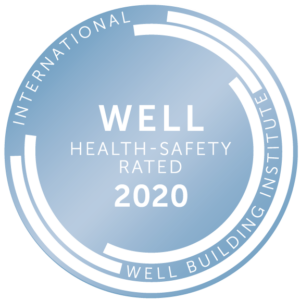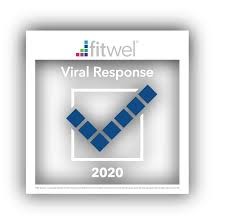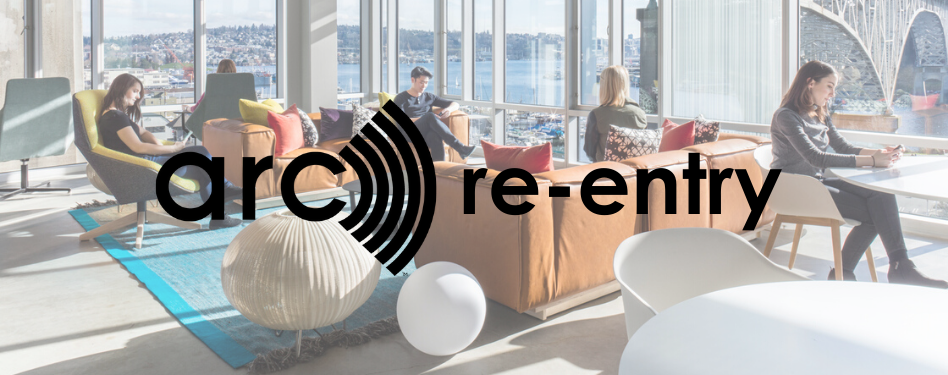

Blog
Experts in sustainable design have developed guidelines, protocols, and toolkits to adapt existing buildings to the ‘new normal’ caused by COVID-19.
Over the last several months, experts in sustainable design related to human health and interior wellness have developed guidelines, protocols, and toolkits to adapt existing buildings to the ‘new normal’ caused by the COVID-19 pandemic. These tools can be leveraged by building owners and property managers to enhance their healthy building strategies, ensuring their properties are mitigating risk with building wellness and safe building protocols. And, once implemented, building teams can earn recognition for their hard work with industry recognized organizations, which will build confidence for tenants and employees.
We’ll be highlighting three programs that complement your ESG and/or wellness goals across any portfolio or building typology. All three were created to be scalable, flexible, easily implemented, and cost-effective. Let’s get started.

The first program is the WELL Health-Safety Rating for Facility Operations & Management created by the International WELL Building Institute (IWBI). Rooted in science-based practices and procedures, this rating is a short form of the WELL Building Program, one of the industry leading certification systems for health and wellness, and is focused on five core areas specific to viral response:
With this rating system, the IWBI provides both a list of immediate actionable viral response procedures, as well as prepare teams for a longer-term focus on health and safety for tenants and building staff. Customization within the system allows for project teams using this evidence-based framework to target features that are most applicable to their needs – supporting mental health, improving sick leave polices, mold mitigation, and air and water quality contaminant management improvements, to name a few. Unlike the WELL Building Standard, there are no preconditions within this rating. Projects must achieve a minimum of 15 points (out of 22) and showcase how plans have been implemented at the participating properties.
Enrollment can be pursued via two pathways. The first is at the standard location level for individual spaces and buildings. (Bulk pricing is available for this option as well for locations within one owner to streamline documentation.) The second is for high-volume, multi-use spaces designed to accommodate more than 10,000 people daily and have four or more distinct use types, such as stadiums, shopping centers and transit centers. Enrollment fees for a 100,000SF residential multifamily building are $4,200. This fee covers support and resources for the team as well as the project’s documentation review.

The second newly created framework established in response to COVID-19 is the Fitwel Viral Response Module, developed by the Center for Active Design (CfAD). The CfAD has operated the Fitwel program on behalf of the Centers for Disease Control and Prevention (CDC) and the US General Services administration (GSA) since 2016. The GSA provides developmental leadership to the Fitwel program and the CDC is Fitwel’s research and evaluation partner.
The Fitwel Viral Response Module is focused on three key topic areas to mitigate infectious disease transmission: Enhance Indoor Environments, Encourage Behavioral Change, and Build Occupant Trust. Unlike the IWBI rating, this module does have minimum requirements (MR), which are credits that must be achieved in order to be certified. These three key topic areas are then further divided into sub-strategies pertaining to topics such as establishing humidity control policies, green purchasing policies, PPE guidelines, supporting hand hygiene, and plans for business continuity and communication. To achieve certification at the Certified level, 70-89% of strategies must be achieved beyond the MR’s; to be Certified with Distinction, 90%+ must be achieved.
Fitwel Viral Response Module certification follows two key steps:

The third and final framework we’d like to highlight is the USGBC’s Arc platform and its Arc Re-Entry toolkit. The USGBC originally created the Arc program in 2016 as a way for buildings to track and benchmark on-going performance data for specific O+M metrics such as carbon, water usage, and the human experience. Building off the progress made with this system, the USGBC has increased the breadth of the framework to assist projects responding to Covid. The Arc Re-Entry program focuses on three key strategy areas: Facility Management, Occupant Observations, and Indoor Air Quality. Within these three key areas, projects can document and benchmark infection-control policies and procedures, collect and analyze occupant experiences, and measure and track indoor air quality. The program can also be used as a steppingstone for implementing the newly created LEED Safety First Pilot Credits, as well as integrating the IWBI’s WELL Health-Safety Rating.
All projects that have been registered under any version of LEED will receive access to Arc automatically through LEED Online.– Registration is also free for projects. Certification fees can be found here: https://arcskoru.com/pricing and are subject to change by the USGBC.
When evaluating any of these programs, first consider the progress your building team has already made: Are there already alignments with any of these programs? Does your building or portfolio already utilize LEED? Could certification be connected to a future goal related to your Global Real Estate Sustainability Benchmark (GRESB) Reporting?
If you are interested in learning more about any of these certifications or more about how SWA improves the built environment, please contact us. Let SWA assist with your re-entry needs, and help you achieve recognition for all of your teams’ efforts to ensure that your spaces are healthy, safe, and ready for tenants and residents.
Additional resources on building certification post-Covid:
Contributor: Sarah Nugent, Sustainability Director
Steven Winter Associates